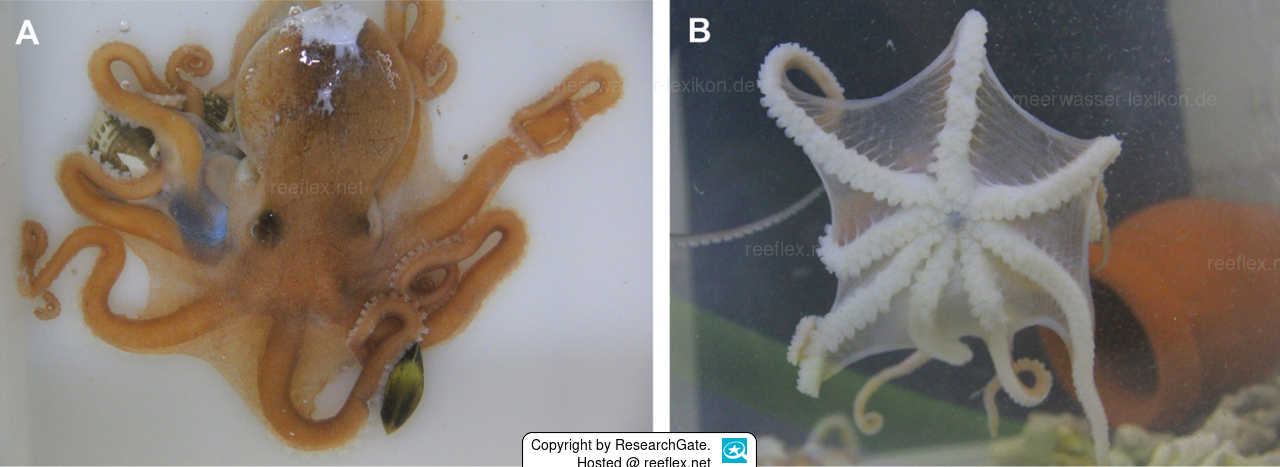Info
Nine specimens of a previously unknown small to medium-sized octopus were caught in the waters of southeast China.
The octopus was named "Callistoctopus xiaohongxu", the species name "xiaohongxu", refers to the small body size and reddish body color and is the phonetic translation of the local Chinese name of this species in Zhangzhou, where specimens were collected.
The most characteristic and defining morphological features are reddish-orange to reddish-brown skin, gills with 8 or 9 lamellae per demibranch, a W-shaped funnel organ, and small suckers.
Color of live animal is reddish-orange, turning white when stressed or post mortem.
In live animals, a linear structure appears on the tissue connecting two adjacent arms, forming a reticulated structure.
Arm chromatophores are prominent under the skin.
Callistoctopus xiaohongxu unlike other Callistoctopus species does not have spots on the skin, these other species have white spots or bars on the mantle, head and arms.
Literature reference:
Zheng X, Xu C, Li J (2022) Morphological description and mitochondrial DNA-based phylogenetic placement of a new species of Callistoctopus Taki, 1964 (Cephalopoda, Octopodidae) from the southeast waters of China. ZooKeys 1121: 1-15. https://doi.org/10.3897/zookeys.1121.86264
The octopus was named "Callistoctopus xiaohongxu", the species name "xiaohongxu", refers to the small body size and reddish body color and is the phonetic translation of the local Chinese name of this species in Zhangzhou, where specimens were collected.
The most characteristic and defining morphological features are reddish-orange to reddish-brown skin, gills with 8 or 9 lamellae per demibranch, a W-shaped funnel organ, and small suckers.
Color of live animal is reddish-orange, turning white when stressed or post mortem.
In live animals, a linear structure appears on the tissue connecting two adjacent arms, forming a reticulated structure.
Arm chromatophores are prominent under the skin.
Callistoctopus xiaohongxu unlike other Callistoctopus species does not have spots on the skin, these other species have white spots or bars on the mantle, head and arms.
Literature reference:
Zheng X, Xu C, Li J (2022) Morphological description and mitochondrial DNA-based phylogenetic placement of a new species of Callistoctopus Taki, 1964 (Cephalopoda, Octopodidae) from the southeast waters of China. ZooKeys 1121: 1-15. https://doi.org/10.3897/zookeys.1121.86264







 ResearchGate
ResearchGate



